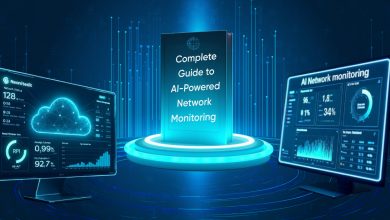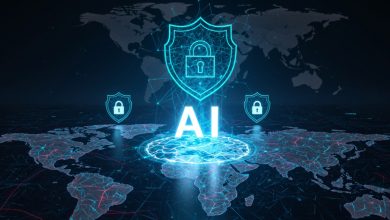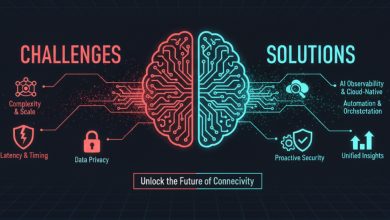10 Signs Your Network Monitoring Needs an Upgrade

Introduction
Your network is the lifeblood of your business, but outdated tools may be silently working against you.
False alarms, blind spots, and slow root-cause investigations aren’t just frustrating; they cost money, customers, and credibility.
In today’s hybrid and multi-cloud world, traditional monitoring struggles to keep up.
In today’s hybrid and multi-cloud world, traditional monitoring These 10 warning signs show it’s time to upgrade to AI-powered network monitoring before your next big outage strikes.
1. You’re Drowning in False Alarms
The problem: Static thresholds can’t distinguish between a normal traffic spike and a real threat.
The impact: Engineers start ignoring alerts, leading to alert fatigue and missed critical incidents.
AI-powered alerting that learns your network’s normal behavior, filters noise, and flags true anomalies.
2. Root Cause Analysis Takes Forever
Imagine this: a customer complains their checkout page is slow. Your monitoring shows the database is fine, the app server is fine… But sales are tanking. Three hours later you find the culprit: a misconfigured load balancer in another region.
The problem: Traditional monitoring isolates metrics, offering no correlation between systems or services.
The solution: Observability-driven platforms that link metrics, logs, traces, and flow data so you can trace an issue across the stack in minutes, not hours.
3. Your Dashboards Look Like a Museum Exhibit
The problem: Dashboards built for yesterday’s network.
The impact: You can’t see real-time data. No service-level or business context. The team wastes time pulling reports from multiple tools.
The solution: Live, customizable dashboards that show what matters now, including user impact, revenue at risk, and service dependencies.
4. Metrics Stop at the Device Level
The problem: Device-centric views don’t show how services interact.
The solution: Gain complete end-to-end visibility, tracing every hop from client to service to database across on-prem, cloud, and edge environments.
5. You Can’t Keep Up With Hybrid or Multi-Cloud Traffic
The problem: Legacy monitoring struggles to normalize data from different clouds.
The solution: A unified telemetry pipeline that speaks all the formats so you don’t need to log into five consoles just to get a complete picture.
ScoutITAi Reveals 10 Signs Your Network Monitoring is Outdated
6. Static Thresholds Trigger More Than They Help
The problem: Static rules trigger constant false positives and miss emerging issues.
The solution: Dynamic baselines and machine learning models that adjust thresholds based on normal usage patterns.
7. No Integration With Logs, Traces, or Flows
The problem: Siloed tools force manual correlation to be slow, error-prone, and frustrating.
The solution: Platforms that bring metrics, logs, traces, and flow/packet data together in one view.
8. Performance Tanks After Every Change
The problem: Old tools don’t tie performance changes to configuration or deployment events.
The solution: Change the correlation that shows exactly what changed, when, and how it impacted the network.
9. Security & Compliance Data Is Scattered
The problem: Traditional monitoring doesn’t store or correlate enough security-relevant data.
The solution: Observability platforms that track policy changes, trace suspicious flows, and store evidence with audit trails.
10. Your Team Spends More Time Maintaining the Tool Than Using It
The problem: If upgrading, patching, and babysitting your monitoring tool eats up more hours than actual incident response, you’ve got the wrong tool.
The solution: Cloud-native monitoring and observability platforms with automatic updates, elastic scaling, and built-in integrations.
Conclusion – Don’t Wait for the Big Outage
If you agreed with more than a few of these points, it’s not just “time for an upgrade”; it’s time to rethink your monitoring.
The longer you wait, the more expensive outages, SLA breaches, and customer churn become. Upgrading isn’t about new features; it’s about uptime, user experience, and your team’s sanity.
Ready to see what a better approach looks like? Schedule your demo today and gain control of your monitoring.
FAQs – Upgrading Your Network Monitoring in 2025
At least once a year, but in fast-changing environments like hybrid or multi-cloud networks, every 6 months is better. Technology evolves quickly, and so do threats and performance expectations.
Monitoring detects when something is wrong—think “symptom detection.” Observability goes deeper, showing why it’s wrong, where it started, and how far it spread. The best setups combine both.
Absolutely. Many teams layer an observability platform on top of their existing monitoring for deeper analysis while keeping the simpler “health guardrails” in place.
If more than 20–30% of your alerts turn out to be false positives, you’re at risk of alert fatigue, which can cause your team to miss real issues.
It depends on your approach. Cloud-based, usage-based pricing models can reduce upfront costs. Most teams recoup the investment through fewer outages, faster incident resolution, and reduced downtime.
Look for unified telemetry (metrics, logs, traces, and flows), dynamic baselining, AI-powered correlation, service-aware topology maps, and strong integrations with your existing tool stack.
A small-scale rollout can take 2–4 weeks for one critical service. Full enterprise adoption can take several months, especially if you’re consolidating multiple tools.
AI in monitoring isn’t magic, but it’s practical for grouping similar alerts, reducing noise, and spotting anomalies faster than humans can. Just make sure the tool tells you why it’s flagging something, not just “because AI said so.”
If you don’t upgrade, you risk longer outages, higher operational costs, SLA breaches, and frustrated customers. In competitive markets, that can mean lost revenue and reputation damage.
Focus on the ROI: faster mean time to resolution (MTTR), fewer false alerts, reduced downtime, better compliance reporting, and improved user experience—all of which impact revenue and brand trust.

Tony Davis
Director of Agentic Solutions & Compliance




